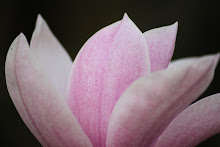The experimental video project started just 7 weeks ago. From the 26th of October the paper work was started, this included storyboards, animatics, shooting schedules and assessments.
My idea started off being something completely different, and many things had meant that I had to change it; I wanted to keep the production as a stop-motion animation film. My storyboard had meant that if I drew in too much detail, it may have spoiled the story. Luckily, I was able to create a basic image with simple details, e.g. an arrow to show movement, or a symbol to show where music will be played. This had also meant that if need be, I could continue past the storyboard in case I needed more footage.
Once all the paperwork had been confirmed, filming began from the 2nd November. This had meant that I had 2 weeks to get all the pictures onto a memory card ready for the following weeks. I was a little worried at the start of everything because I didn’t know if I had left enough time to do all the filming without running into editing time. The day had started with 40 mins spent on deciding whether to have the black backdrop or not. This had worried me more, due to keeping to the time schedule. This problem was due to the camera over-exposing the wooden men and the fruit on the table. After deciding not to have the backdrop the camera focused onto the wall at the back instead of the objects - maybe I should have tried to work with the backdrop.
The first days work went really well in my opinion, I got enough pictures to complete the first ‘scene’. Later that day, the pictures where edited slightly ahead of schedule, and placed onto facebook.
The second day proposed more problems to be dealt with. The main problem was not having enough idea’s to start the second scene. Eventually, the crew and I had made the best use of our time as well as resources. I had brought some 'blue tack' to help change the wooden men’s appearance. This then made the third scene. Again, the first day’s scene was copied slightly. This had meant that it was repeating itself, although as a final product it wouldn’t matter as there was still the second scene to do.
The third and last day of taking the pictures for the video, the pictures made the last and second scene of the video. This was the last scene of the video, and everything went well. The use of blue tack helped to animate the fruit and table that I wasn’t able to animate the day before. The crew made the few scenes’ funny as well as getting them done quickly, giving us the opportunity to add more picture if necessary. Fortunately, we didn’t feel the need to add more scenes. The blue tack helped a lot with the fruit and it made the scene more creative because I didn’t have to worry about something falling off the 'table' or rolling off the desk.
Once all the filming had been done, I was able to edit all the pictures together, whilst adding music or any transitions I thought I needed. My thought of lack of time had meant during the previous weeks I had edited together the pictures at home, this had meant I had more time to find music and special effects. Fortunately, I had left myself with plenty of time to do all the editing. To start with many problems arose. One of the main problems was not being able to find any classical music. This had meant I had to spend slightly longer on the music. In the end I chose to go with a jazz piece of music, and edit it so it was just a violin playing. This made it sound like it was playing a piece of classical music. During the editing weeks I also had to make some voices up. I did this by asking the crew to mimic something which was shown on TV. This had made it easier to be edited along with the pictures because I knew what the scenes where and what type of sounds should go with them.
My exhibition was on Wednesday 2nd December, in the Le Corden Vert restaurant. Along side my video; I gave the audience a questionnaire to fill out. I thought that the questionnaire would be the best way to try to find out the audience’s opinion on the video. This included some simple questions as well as some more complex questions, without there being any discussions. Overall, many members of the audience didn’t actually watch many short films but liked my first attempt at creating an experimental short. Many also agreed that they didn’t know what the concept of the video was. I think that this was better, instead of it being really simple and easy to guess. Nearly everyone agreed that my fruit animation was amusing as well as the sound effects. The majority of the people liked the second scene, the fruit animation, with the third scene being liked second best.
Many spotted the problems I tried to avoid, for example seeing hands appear in the shots or slightly out of focus wooden men etc. Sometimes this wasn’t able to be helped, but then again, I think this adds an element of improvement. I personally think it looks better with the odd mistake.
Overall, many of the members of the audience found it was a good effort for a first attempt. Many things could have been better if I had more time, i.e. having classical music.

